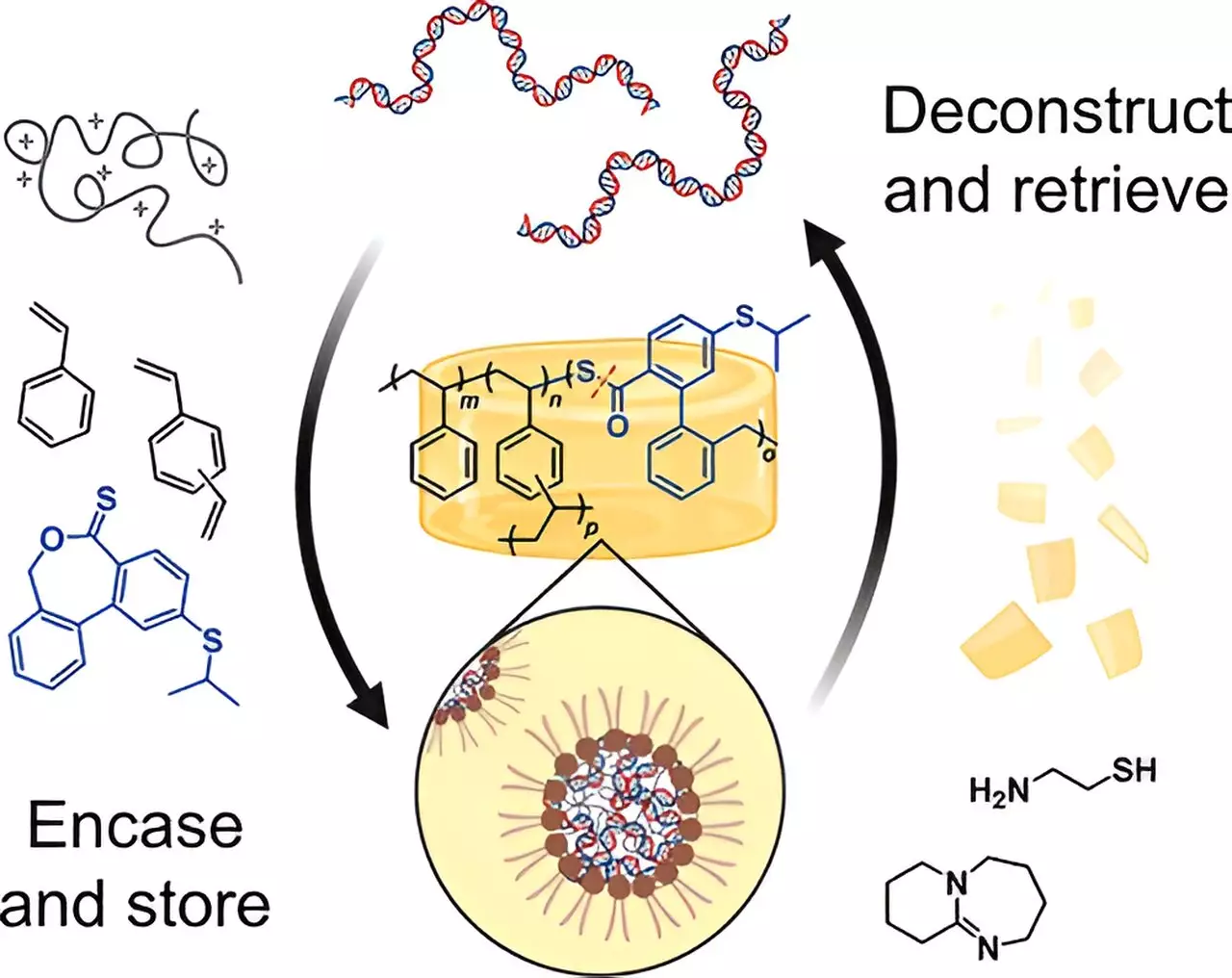The current landscape of data storage is dominated by technologies that, despite their ubiquity, fall short in terms of sustainability and scalability. Traditional storage mediums—hard drives, magnetic tapes, and even cloud-based servers—rely heavily on energy-intensive cooling systems and materials that degrade over time. This creates a paradox: as our desire to store more data accelerates, our methods become increasingly unsustainable. The pressing question then becomes: can we transcend these limitations?
Innovative solutions are emerging in the form of molecular storage—particularly DNA. Its remarkable stability, density, and longevity make it a prime candidate for the future of data preservation. However, the methods we currently employ for DNA storage—including freezing at cryogenic temperatures—are costly, energy-consuming, and not practical in many parts of the world. This is where recent breakthroughs in biomaterial engineering can transform the game entirely. Scientists are now developing amber-like polymers capable of storing DNA at room temperature, offering an elegant, energy-efficient alternative that could democratize data storage on an unprecedented scale.
Harnessing Nature’s Blueprint: From Fiction to Reality
The idea of preserving biological material through encapsulation isn’t entirely new—popularized by fiction like “Jurassic Park,” where prehistoric DNA was preserved in amber. Today, the scientific community is turning this cinematic concept into a tangible technology, inspired by nature’s own robust mechanisms. Researchers have engineered a transparent, amber-quality polymer designed explicitly for long-term DNA preservation. This material not only mimics the inert qualities of natural amber but also provides a protective environment that shields genetic material from heat, water, and oxidative damage at ambient temperatures.
This innovation addresses a critical bottleneck in the field of genomic data storage: the vulnerability of DNA outside controlled environments. By embedding DNA within this polymer matrix, scientists can securely preserve genetic information or large digital files encoded in DNA sequences—such as iconic music or historical documents—for decades or even centuries. Furthermore, the ability to retrieve the stored DNA without causing damage signifies a practical, scalable step toward real-world applications.
Redefining the Future: Towards Sustainable and Accessible DNA Archives
The implications of this technology stretch far beyond academic curiosity. For one, the capacity to store entire human genomes affordably and durably can revolutionize personalized medicine. Imagine a future where your genetic blueprint, encrypted in stable DNA within a simple capsule, is accessible for diagnostic, therapeutic, or research purposes decades from now—without the need for expensive freezers or energy grids.
Moreover, this approach democratizes information storage, particularly in regions where cold-chain infrastructure remains inadequate or nonexistent. Portable, room-temperature DNA storage capsules can serve as universal archives for cultural heritage, scientific data, or national records. Governments and research institutions could leverage these tiny yet dense storage units to safeguard invaluable information with minimal environmental impact.
Another compelling advantage is the reversibility of the process. Unlike current methods that rely on hazardous chemicals like hydrofluoric acid to retrieve DNA from silica particles, this polymer system allows for non-destructive extraction, preserving the integrity of the genetic material. This feature opens doors for repeated use, analysis, and biosecurity measures, reinforcing the system’s versatility.
Challenging the Status Quo: Is This the Future We’ve Been Waiting For?
While the promise of amber-like polymers for DNA storage is undeniably exciting, it’s essential to adopt a critical perspective. The transition from laboratory prototypes to large-scale implementation involves numerous hurdles—scaling manufacturing processes, ensuring consistent quality, and establishing standard protocols for data encoding and retrieval. There is also the question of cost: while these polymers aim to be energy-efficient, the production materials and synthesis steps are still complex and potentially expensive.
Additionally, the durability of these materials over centuries remains to be rigorously tested. Natural amber has endured for millions of years, but whether synthetic variants can replicate this longevity under real-world conditions is yet to be fully validated. If these polymers degrade or become brittle over time, the invaluable data they contain could be lost, nullifying some of their advantages.
Furthermore, the assumption that DNA will remain stable within these polymers for extremely long periods must be balanced against biological and chemical degradation pathways that could emerge unexpectedly. These uncertainties demand extensive long-term studies, which could delay the widespread adoption of this technology.
Finally, one must consider the broader ethical and ecological implications. As DNA synthesis and storage become more prevalent, questions surrounding data security, consent, and the environmental impact of manufacturing these polymers warrant careful deliberation. Ensuring that this tech doesn’t become a tool for illicit activities or environmental harm will be critical.
While the development of amber-like polymers for DNA storage represents a remarkable leap toward sustainable, high-density data preservation, it is not a panacea. Vigilant scrutiny, rigorous testing, and strategic investment are necessary to realize its full potential. If these challenges are met with innovation and responsibility, this technology could redefine not only how we store information but how we preserve the essence of human knowledge itself.

